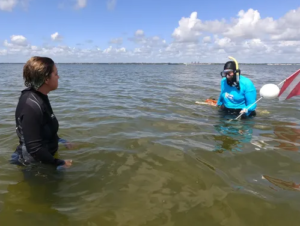
Seagrass is one of the most valuable ecosystems on the planet. Often referred to as the “lungs of the sea” for its unique ability to clean surrounding water and remove carbon dioxide from the atmosphere, seagrass communities have been compared to the marine equivalent of tropical rainforests. An acre of seagrass supports up to 40,000 individual species of fish, over 50 million small invertebrates and has an economic value of over $20,255 per year. The biological, ecological and financial value of seagrass is without question.
With such an incredibly valuable resource within a waterbody that continues to struggle under the onslaught of development and deterioration, it is curious that we would have publicly elected representatives who would file legislation that would further encourage the decimation of seagrass in our Indian River Lagoon.
House Bill 349, filed by State Reps. Tyler Sirois and Toby Overdorf, would allow for the creation of “marine mitigation banks.” This would include seagrass as well as other marine habitats — oysters, sponge and coral. Mitigation banking originated in the 1980s as a way to compensate for wetlands destruction resulting from government transportation projects by creating or enhancing similar resources elsewhere. The goal was “no net loss” of habitat.




